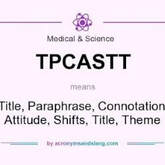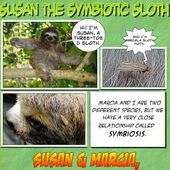ISTE Standard 2: Teaching, Learning, and Assessments
 Image credit: Google
Image credit: Google
Artifact 1
MEDT 7476: Assessing Learning in Technology-Enhanced Learning
Digital Poetry Project Implementation and Assessment
This project blends traditional instruction on the TPCASTT poetry analysis method and online digital tools. Students are asked to complete analyses of different poetry examples, select examples based around a common theme, and present their portfolio using multimedia.
MEDT 7476: Assessing Learning in Technology-Enhanced Learning
Digital Poetry Project Implementation and Assessment
This project blends traditional instruction on the TPCASTT poetry analysis method and online digital tools. Students are asked to complete analyses of different poetry examples, select examples based around a common theme, and present their portfolio using multimedia.

Artifact 2
MEDT 7490: Visual & Media Literacy
Susan the Symbiotic Sloth
This graphic novelette teaches about different ecological interactions (mutualism, commensalism, and parasitism.) By using an unusual format (comic books), it should grab students' attention and aid in information retention.
MEDT 7490: Visual & Media Literacy
Susan the Symbiotic Sloth
This graphic novelette teaches about different ecological interactions (mutualism, commensalism, and parasitism.) By using an unusual format (comic books), it should grab students' attention and aid in information retention.
Reflection
These two projects are great examples of when implementation is successful . . . and when it is not. The successful implementation was the graphic novelette on symbiosis. It was incredibly fun to make. It was completed in the fall of 2019, and I continue to use it in my science classes. Students may laugh at it for being “silly” but they pay attention! Unfortunately, the digital poetry project was not as successful. I believe the concept and the bare bones of the project were/are sound, but initial learner analysis greatly underestimated students’ prior knowledge, the virtual learners were not engaged, and the instructor was -- understandably -- overwhelmed by the number of different classes she had to teach as the only virtual high school teacher once students came back face to face and was unable to provide enough remediation. Due to complete happenstance, I ended up having to deliver some of the content and complete the project with students who did come back face to face and I had slightly more student output than the students who stayed virtual. I plan on doing a lot of redesign before I teach this lesson again next year.
